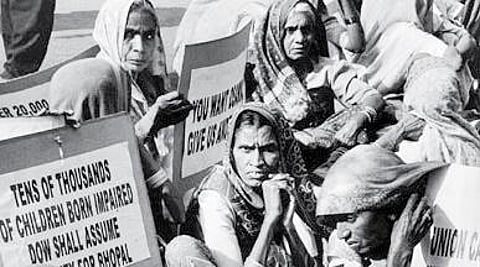

HYDERABAD: When push comes to shove, a few who rise to the occasion to tackle the problem head-on. Fortunately, former Osmania University Professor K Purushotham Reddy is one of them. Armed with the principles of non-violence, Reddy has been spearheading various movements to protect farms from being ravaged by chemical factories.
On the night of December 2, 1985, when methyl isocyanate leaked from Union Carbide India Limited’s pesticide factory in Bhopal, it killed at least 4,000 people and left many others with gas-related diseases for life. It is one of the worst industrial disasters in the world. It shook Reddy to the core.
Months later, he himself became a victim of industrial pollution. Reddy witnessed effluents of a chemical company being dumped in a borewell adjoining his farm in Saroornagar, where his family used to work. His farm, like those of others in the vicinity, became uncultivable due to chemical effluents entering groundwater aquifers.
That shook his conscience and spurred him into action. His enthusiasm stoked a fire, creating a mass movement, which earned headlines like “Academics in Action” and “Padayatra of a Different Kind.” A string of agitations and movements that followed using the Gandhian values of non-violent protests, to reclaim and reinforce the democratic rights of victims.
With the support of the media, Reddy, along with his colleagues Prof M Kodandaram, Prof F D Vakil, and others, also took out a padayatra to study the issue. They then approached the Andhra Pradesh High Court, which appointed an ‘Advocates Commission’ to study the matter. Based on the panel’s report, the court ordered the polluting company to shut down.
This small victory had a domino effect across the country, as victims of industrial pollution from Nacharam in Secunderabad approached Reddy and his team, seeking support to wage a democratic fight against companies that were causing groundwater and air pollution. The affected villagers led by Reddy held a relay hunger strike for a week and marched to the then-Andhra Pradesh Pollution Control Board’s office with around 2,500 people.
“We were lucky that a meeting of the board was underway, presided by an IAS officer named Natarajan. After it was over, the board ordered the company to set up an effluent treatment plant (ETP) and sanctioned Rs 70 lakh for a clean-up operation, which was completed within three days,” Reddy recalls.
This was just the beginning of his activism. As similar cases cropped up in and around the country, activists began forming ‘anti-pollution committees’ for every movement. They co-opted the media to spread their message and garner public support.
The most significant fight was in the late 1980s against the Patancheru industrial pollution in the Medak district that rendered 20 villages in the area uninhabitable. Dr A Kishan Rao, who was spearheading the movement there, sought to collaborate with Reddy. This led to the movement gaining enough momentum for it to be termed as a state issue.
The activists planned a ‘Chalo Assembly’ (Assembly march) agitation in February 1987, which saw 23-24 trucks filled with the victims from all the villages reaching Hyderabad. Their aim was to make those who were sitting at the state legislature listen to their grievances. A few activists were allowed to enter the Assembly to meet the then chief minister N T Rama Rao. After listening to the delegation, Rama Rao immediately called the chief secretary and ordered the closure of 22 polluting pharma industries in Patancheru.
“We could have turned public anger into a tool against the government. But we believed that the problem needed to be resolved using the technology of protest as per the law and as taught by Mahatma Gandhi,” Reddy tells TNIE.
As expected, all the industries ganged up for a legal battle in the undivided Andhra Pradesh's high court. It was a historic hearing, as those affected by the chemical industries travelled from their villages to witness the high-profile case being argued.
The counsel for the companies argued that the working class would be affected by the closure of the companies. Reddy argued that it was incorrect and meant to mislead the bench. When it was his turn to present his point of view, Reddy articulated it for an hour. In his closing remarks, he asked the judge whether he was going to pass a death sentence on the people of Patancheru.
However, the judge ordered the closure of all the companies and directed them to install ETPs within six months. From protesting against the installation of nuclear reactors to the people’s resistance against uranium mining in the Nallamala forests, Reddy and the band of activists he empowered, continue to work on environmental issues, informing and educating the next generations to protect the Earth.
To this day, Reddy continues to educate students on campuses across the world. At 81, he is still as active as he was in the 1980s. He believes that the time for a collective global action to address the problems of climate change is now or never.